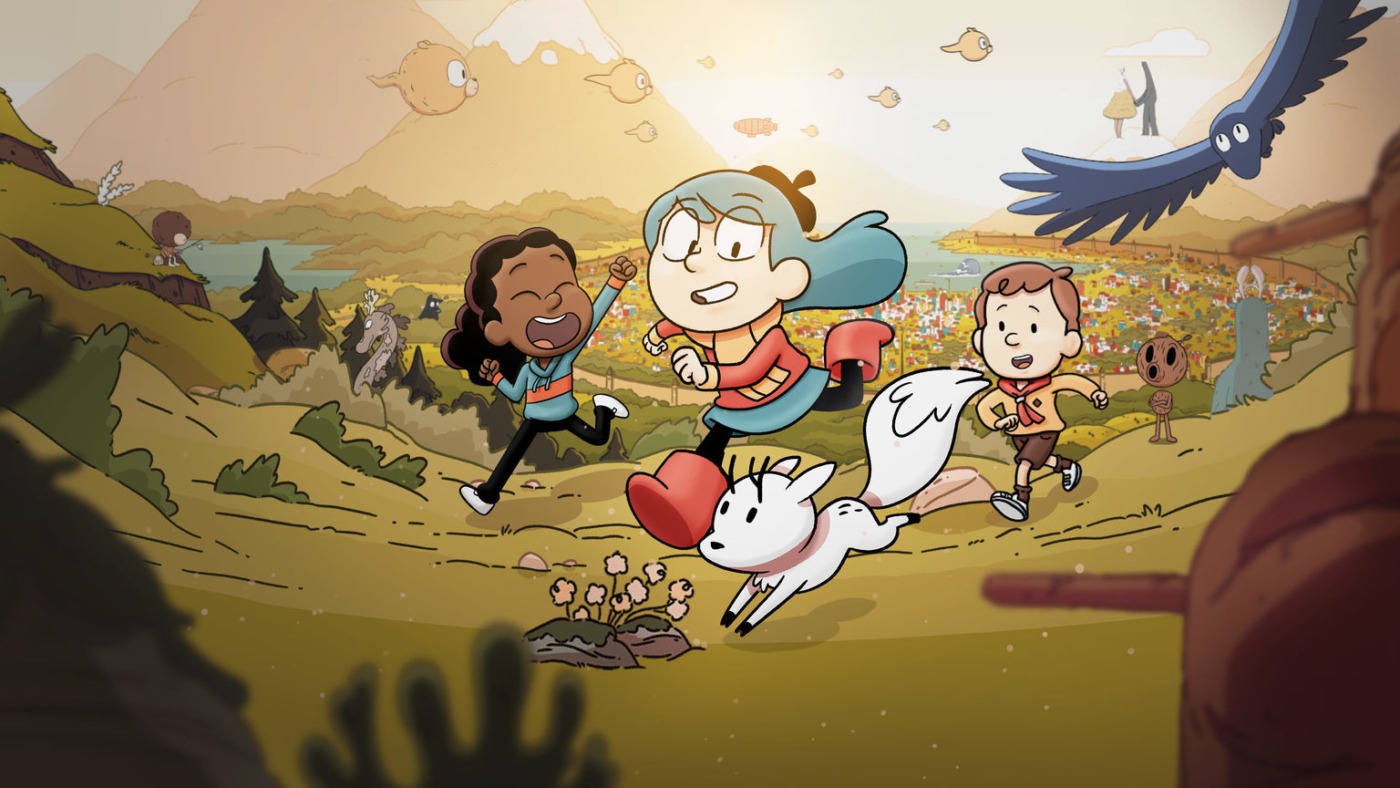‘Hilda’: a cosy antidote for the January blues
In the bitter January cold, Hilda is a cosy show that allows one to shed the exterior hardened by the outside world. This Netflix series, based upon the graphic novels by Luke Pearson, combines warm, autumnal graphics with a humming electronic soundtrack, which should really be watched in front of a crackling log fire with a mug of steaming-hot tea. But since we’re students, a laptop in a cold bedroom will do just fine. When mourning the end of Christmas, Hilda is the perfect show that will ease your anxieties, warmly ushering you into the new year.
Hilda might have initially been designated a children’s show, but it’s adults who (still having to endure the pandemic as well as the cold realities of social anxiety, loneliness, and isolation) have taken to the show with fervour. Maybe it’s the cosy graphics, reminiscent of a YouTube study-beats playlist. Or perhaps it’s the simple, childish charm of the show itself, which allows an inspiring array of relevant political messages and themes to surface with sincerity.
Initially at home in the forest and living with her mother, the first season covers Hilda’s move to the big city of Trolberg after a giant destroys her house. With a curiosity and passion that are enough to bring a smile to anyone’s face, Hilda’s adventures are carried out with endearing wit and tenacity. Often, she’s joined by her friends Frida and David or by some sort of magical creature.
Throughout the season, we see Hilda meet the Rat King, encounter Forest Giants, Elves, Trolls, and various other beings that manage to provide cosy yet well-formulated storylines, and are often more than what initially appearances or stereotypes might suggest. Take the Barghest: a giant black hound who’s actually revealed to be a harmless pet by the name of Jellybean, or the Marra, a creepy nightmare-spirit that is revealed to just be a teenager!
Hilda demonstrates we still have a soft underbelly and a bright side despite our encounters with the seemingly harsh, unforgiving world
Rarely are the scenarios Hilda finds herself in black and white, yet nor are they overly complex or lacking in delightfulness. It’s a blend that makes Hilda both appropriate and appealing to the kind of adult audiences who remember when TV shows adeptly blended child and adult humour.
Whilst the more uncouth adult animation might appeal to our immodest tendencies, in this age many of us yearn for the simpler pleasures and comforts that Hilda’s self-effacing nature can provide and which the show’s aesthetics so readily fulfil. Hilda demonstrates we still have a soft underbelly and a bright side despite our encounters with the seemingly harsh, unforgiving world. Its timeless blend of morals, warmth, and the brand of humour that kids might laugh at but only adults really understand allows Hilda to hit the emotional mark.
It’s a treat that there are thirteen episodes in season one to get lost in. With each new creature and hygge storyline, Hilda carefully engages meaningful themes, mostly centred around the relationships of friendship and family but also of speaking truth to power, mental health, and loss. Consistently these are bolstered by the aesthetic and thematic vibes that make Hilda so nourishing to watch and which are not lost despite the flexible storylines.
When Hilda does touch upon those themes that could be construed as political – and which are often poignantly relevant – it’s to do more than win social justice points or feign sincerity: often it encourages the viewer to reflect upon their own lives whilst also admiring Hilda’s courage.
The show wonderfully flourishes on top of its cosy foundations laid by the setting and themes
Indeed, often it’s not the monsters Hilda encounters that trouble her. In the series her friendship with Frida flounders, her move to the city doesn’t go smoothly, and she suffers inner turmoil after not getting any Sparrow Scout badges. Several times we even see Hilda stay at home rather than go outside, particularly salient for an isolated, pandemic generation for whom the outside can sometimes feel like even more of an overwhelming and risky place despite pandemic restrictions.
Thankfully though, most of the time we see a cheery Hilda who is rarely without anything to say. From the first episode alone, the show is summed up by Hilda who, sipping from a hot mug and reclining on her sofa in front of a crackling fire, exclaims that “I am seriously appreciating the cosiness in here right now!” A sentiment that’s easily shared.
Hilda might not be full-on adult animation, although there’s the occasional joke that rings truer for a mature audience. But neither does it feel simperingly childish or gushy. Rather, without the overtly adult themes of crude humour, references, over-intellectual plots, or painfully complex characters, Hilda manages to feel more mature without effort. The show wonderfully flourishes on top of its cosy foundations laid by the setting and themes.
Clearly, the series’ popularity has been noted too. Over Christmas, the film, Hilda and the Mountain King was released on Netflix and fans now eagerly await season three of the series. Whether the emotional turmoil of the pandemic is responsible for the enthusiasm with which so many adults have taken to Hilda cannot really be answered, but certainly it’s a programme designed to comfort and relax the viewer. And with so much to be gleaned from the first season alone, I’m now abstaining from season two and the film, holding out for that appropriately relaxed rainy day.

Comments